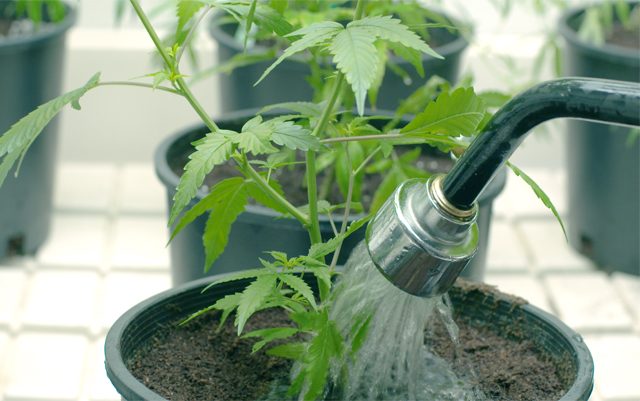Sulfur is the third and final secondary plant nutrient. Known in old English as brimstone, literally meaning “burning rock”, sulfur melts into a blood red liquid and burns with a nearly invisible hot blue flame. It is a common substance which was mentioned in the Bible and utilized by ancient alchemists. Sulfur is the key to many unique natural thiol and terpene taste and smell sensations including grapefruit, garlic and skunk. Elemental sulfur is commonly found in active geothermal areas. Here in California, you can experience the gag inducing, hideously revolting stench of sulfur venting up through boiling mud firsthand at Bumpass Hell in Lassen Volcanic National Park. Rather than mining from volcanic deposits, most of the sulfur we use today in agriculture and industry is recovered from crude oil or natural gas as a waste product of pollution control measures.
During the vegetative growth phase, sulfur is a vital building block of chlorophyll. Its presence or absence can account for the vigor or stuntedness of new roots, stems and leaves. During Cannabis flowering, sulfur is vital to oil production and certain terpenes, such as limonene. Sulfur is required by the plant in order to most efficiently utilize nitrogen. Most farmed crops require sulfur at almost the same rate per acre as phosphorus; as much as 8 to 10 pounds per season.
Sulfur deficiency is unlikely in any naturally occurring or organically fertilized soil, even though Cannabis uses quite a bit. Sulfur deficiency in hydroponic grows is fairly common but easily treated. The telltale symptom is that the chlorosis (yellowing) is strongest on the newest leaf growth, giving the crown a radiant glow of UN-healthfulness. Over-watering or heavy rains can leach available sulfate ions out of the soil and cause a deficiency until bacterial action transforms naturally occurring mineralized sulfur into a form available to the roots. While highly mobile in soil, sulfur is nearly immobile in the Cannabis plant, especially in hot weather. You may recall that Epsom salts (MgSO4) was an inexpensive remedy for a lack of sufficient magnesium; it’s also a good source of sulfur since Epsom salts is magnesium sulfate. Other two for one useful mined soil amendments include gypsum (CaSO4·2H2O) and potassium sulfate (K2SO4). A useful triple source of amendments is Sul-Po-Mag, sulfate of potash-magnesia (langbeinite), 22% of which is Sulfur. Sul-Po-Mag will not affect soil pH. Organic sources of sulfur include manures, compost and sadly, acid rain.
Don’t be lazy. I once tried a shortcut and mixed a dilute calcium chloride solution with a dilute epsom salts solution, thinking I could treat two deficiency problems with a foliar application at the same time . . . oopsie, wrong. The ensuing chemical reaction resulted in a white precipitate of calcium sulfate suspended in the water, ruining my preparation. Doh!
Always measure your pH before and after an application of any substance containing sulfur to monitor for excessive acidification.
Any advice and opinions about the cultivation of Cannabis offered by Bruce N. Goren are his own and do not represent the University of California or the Master Gardener Program.






